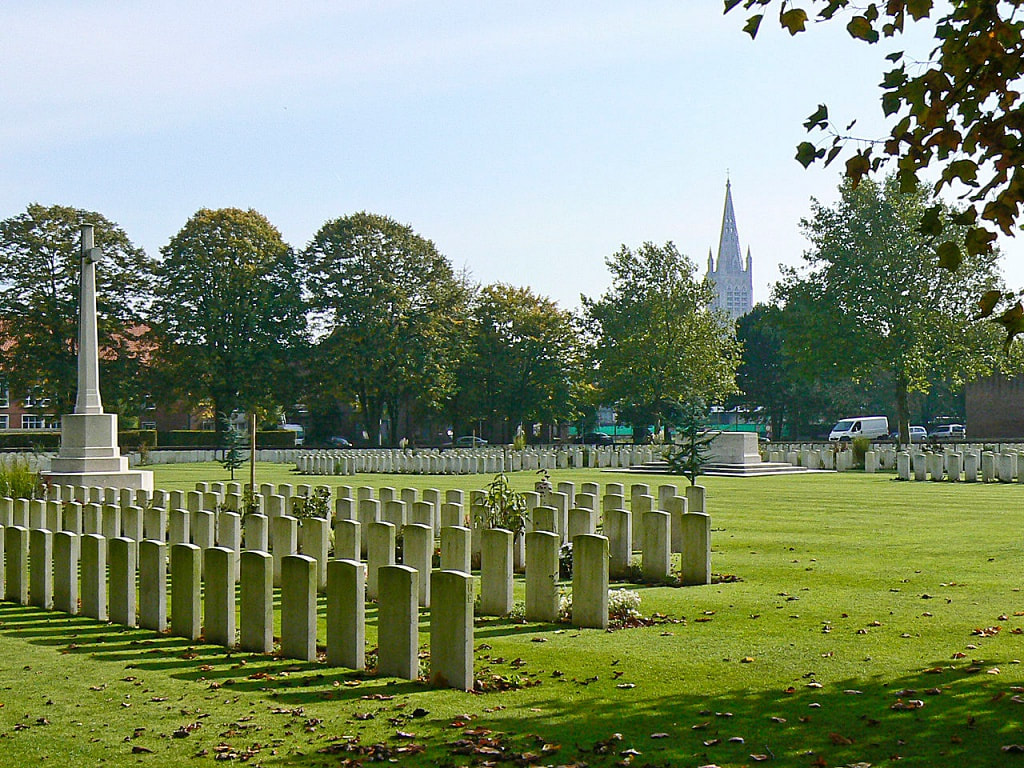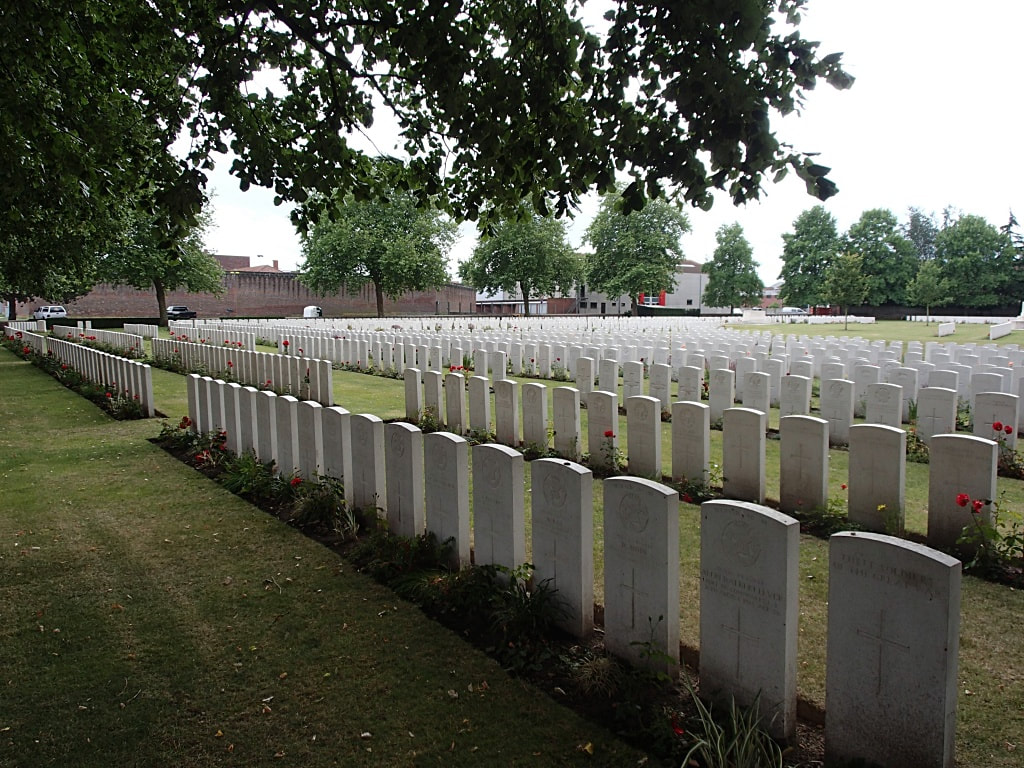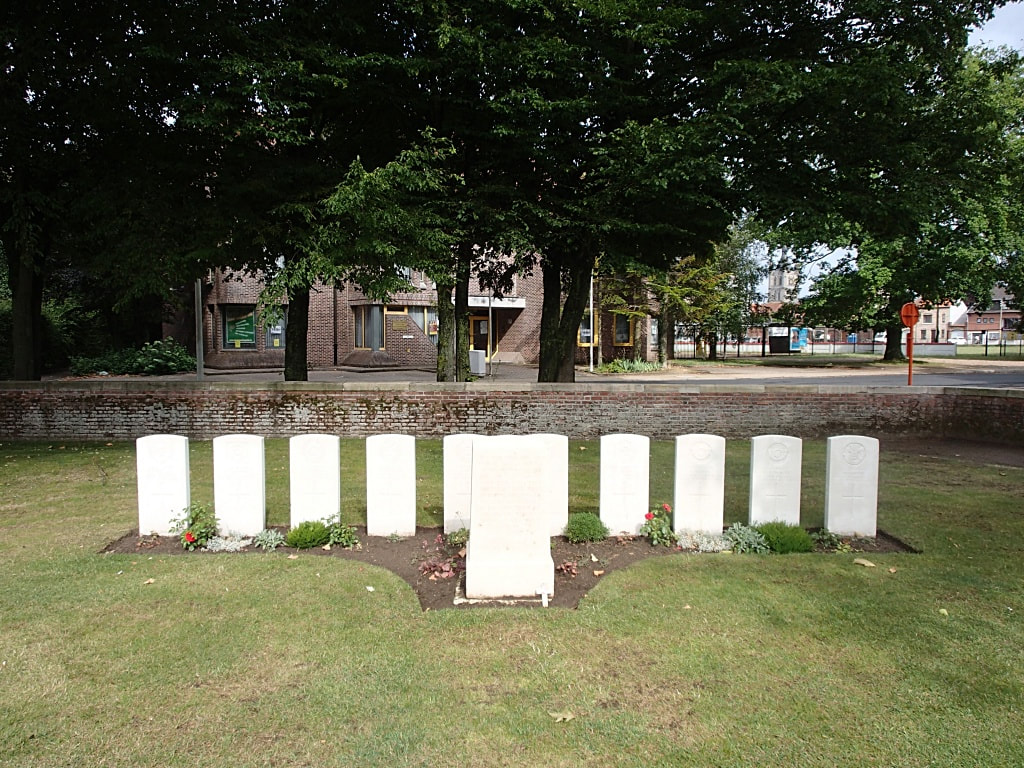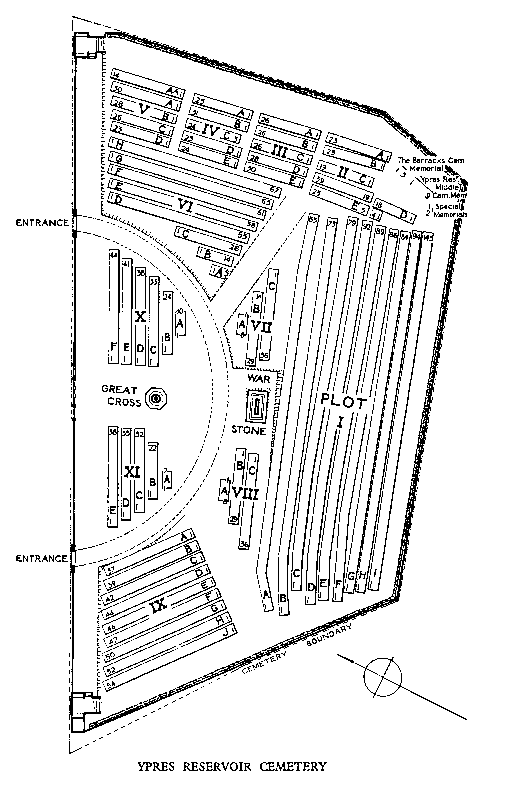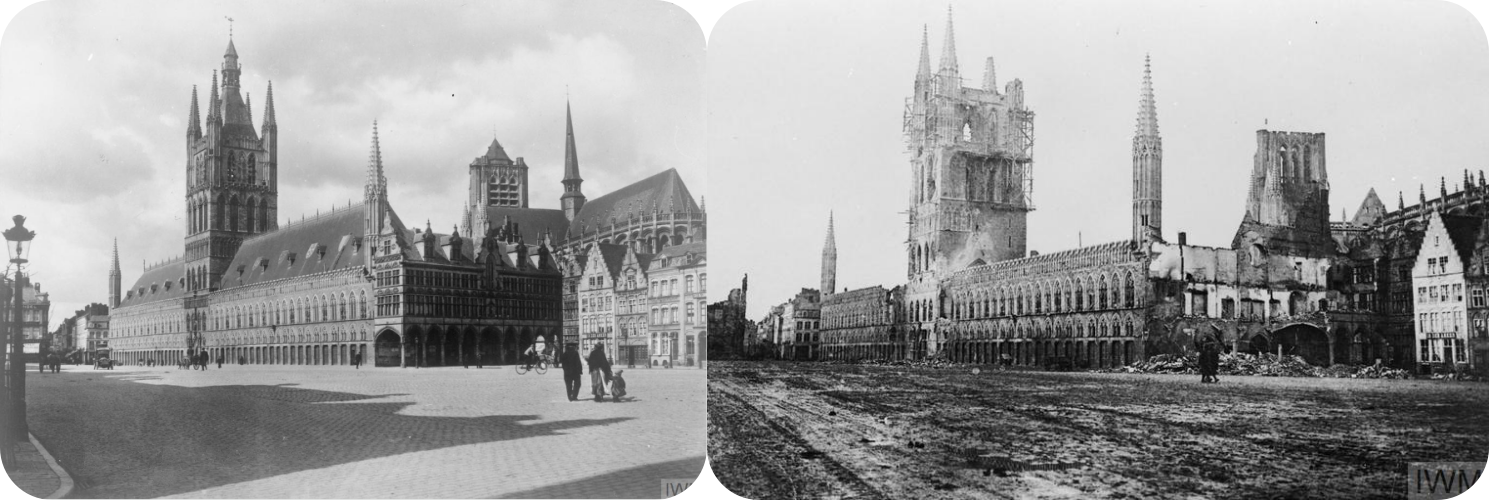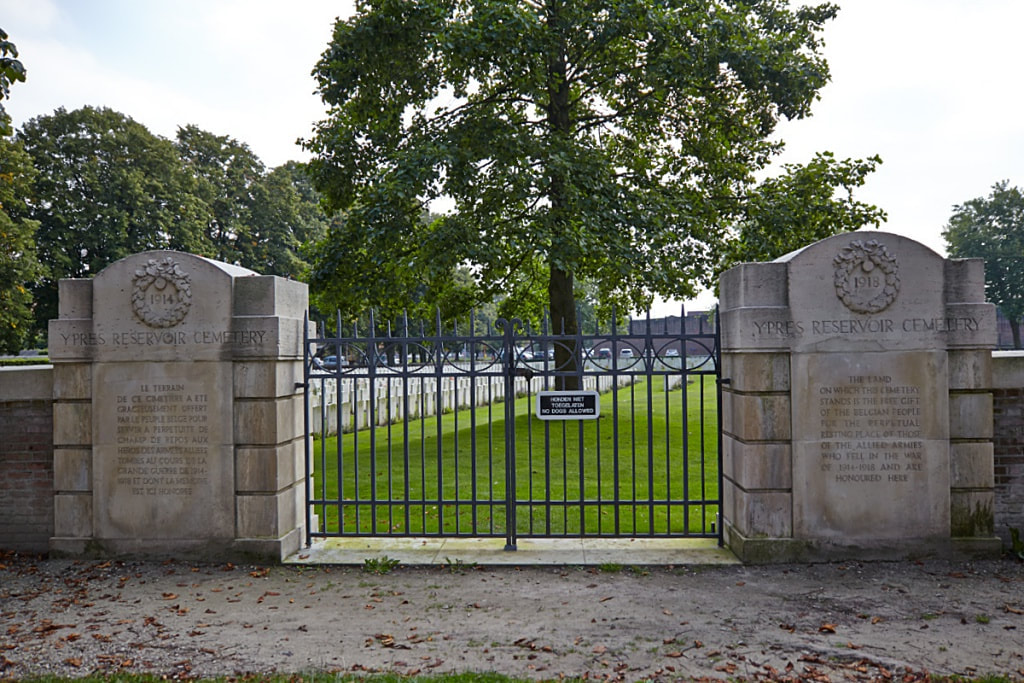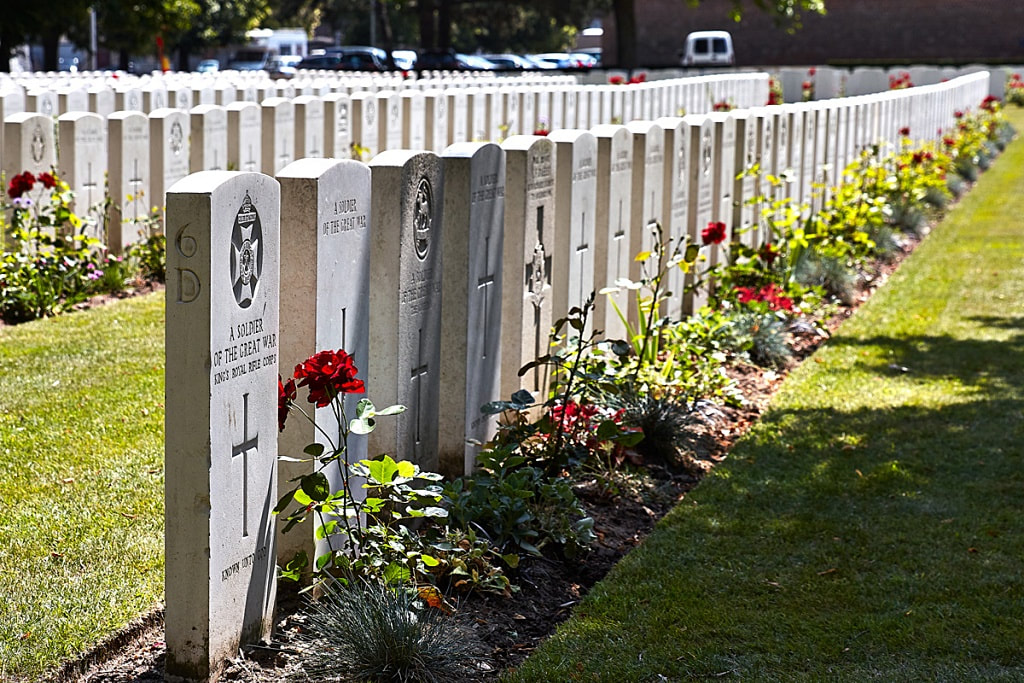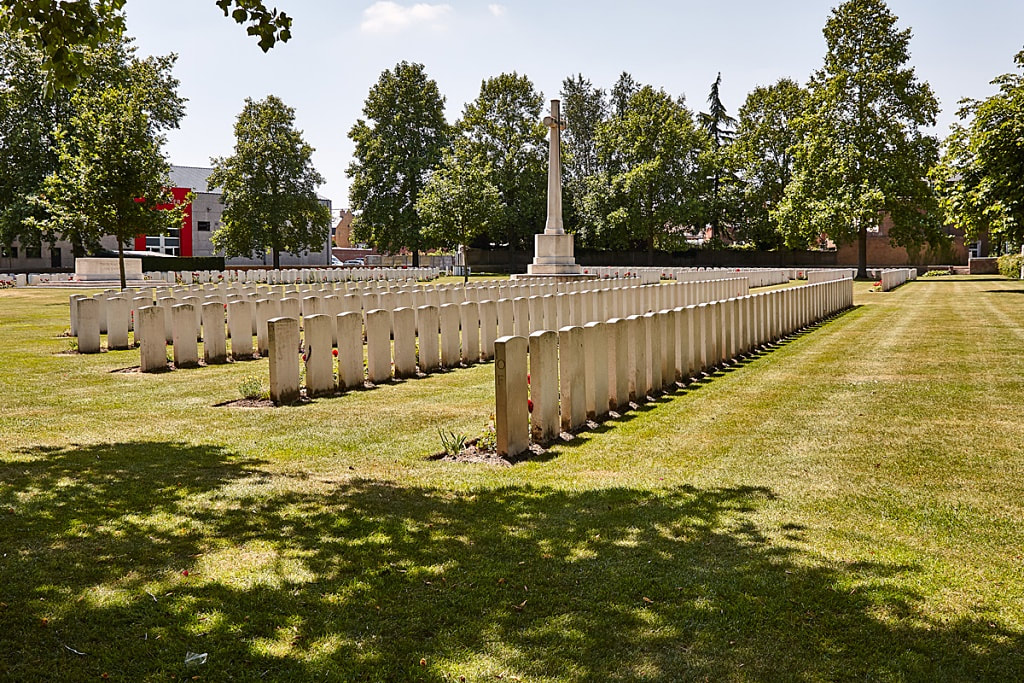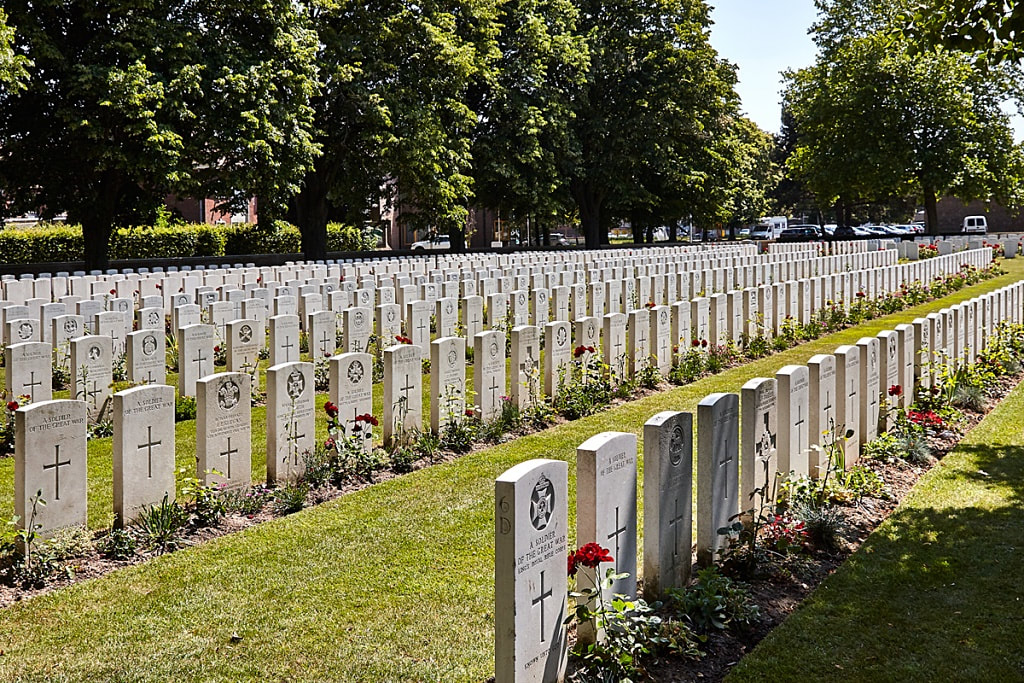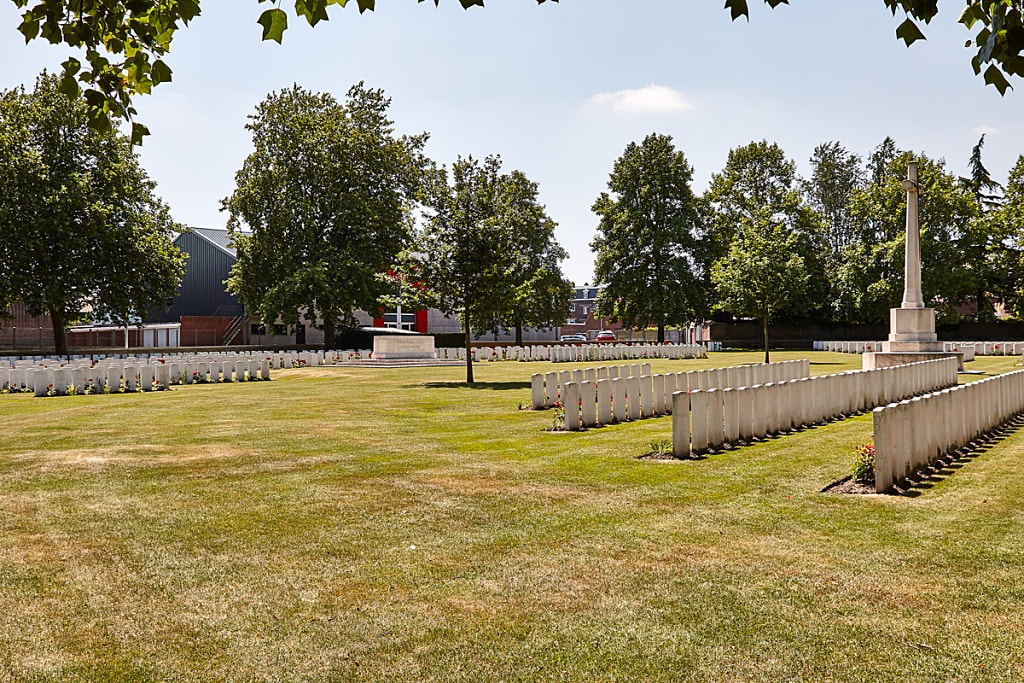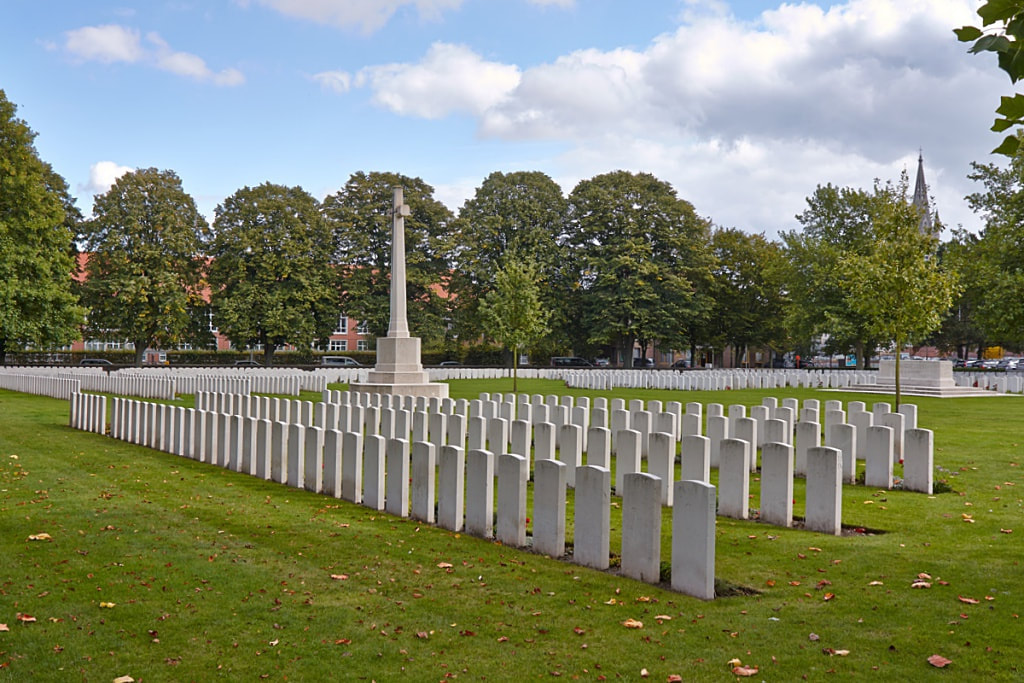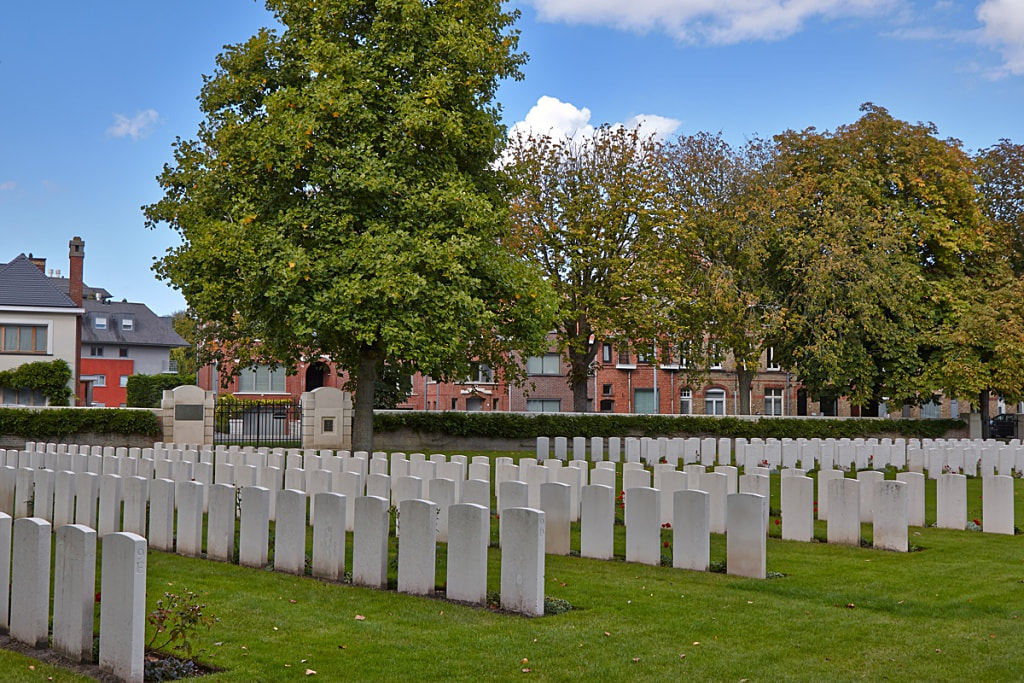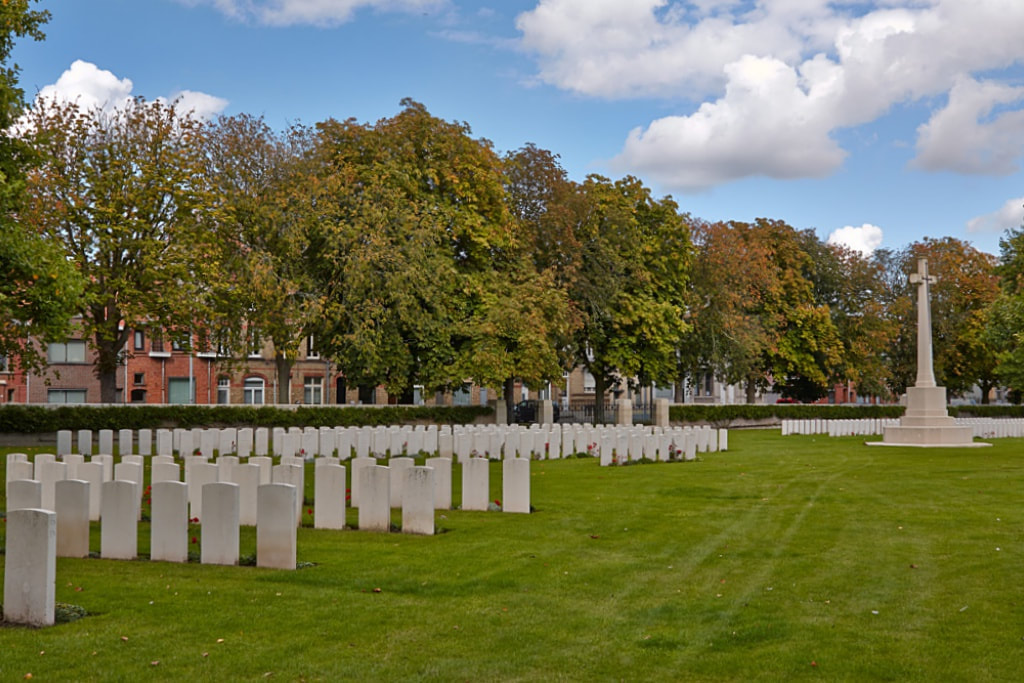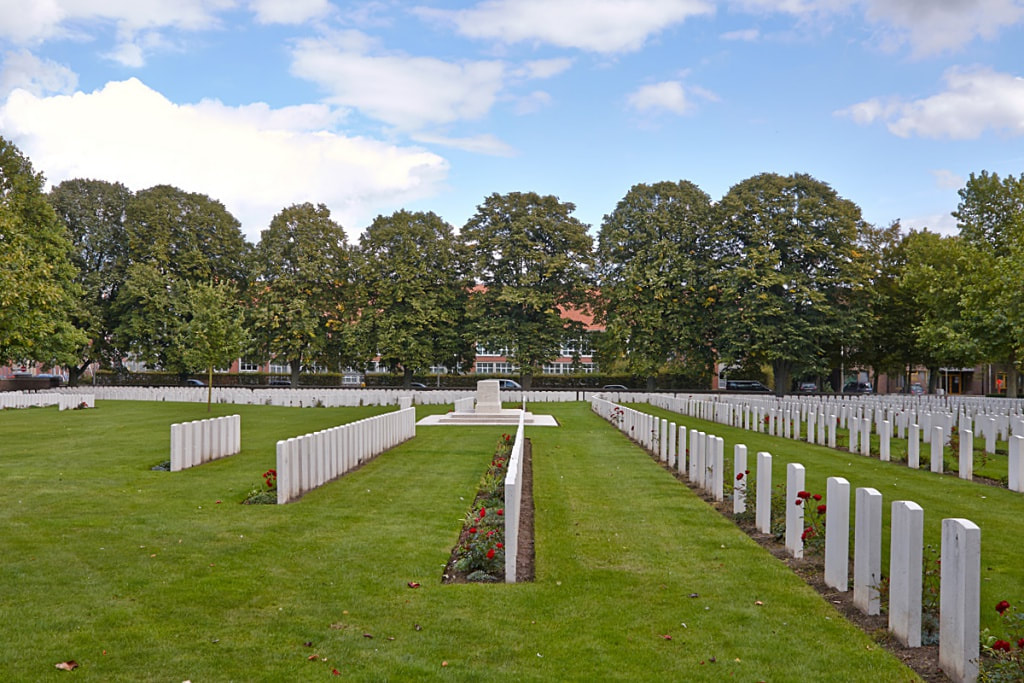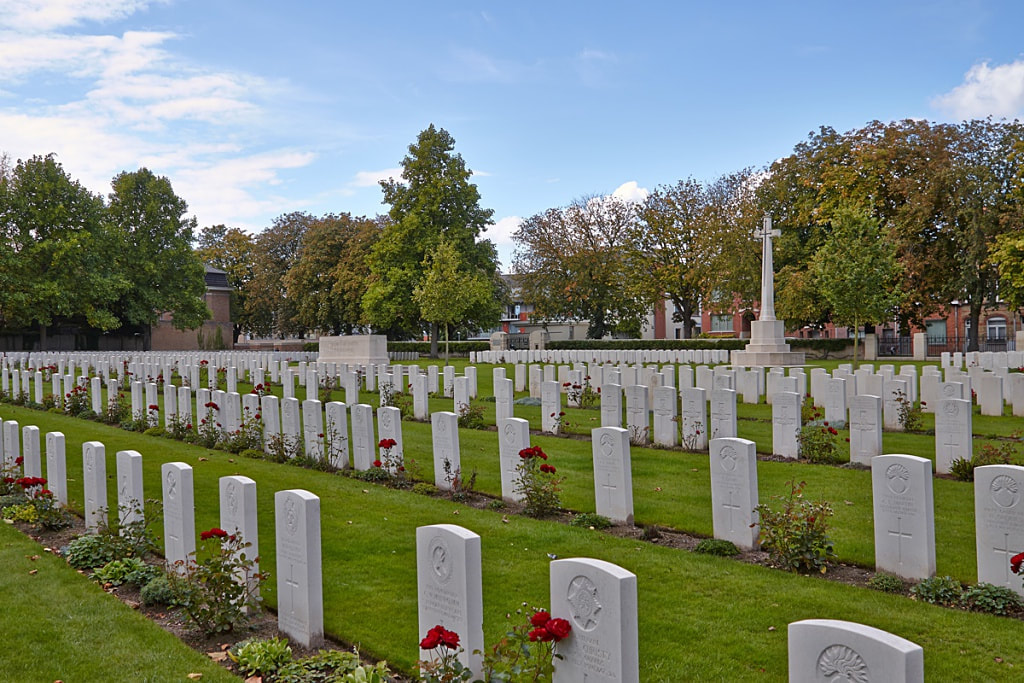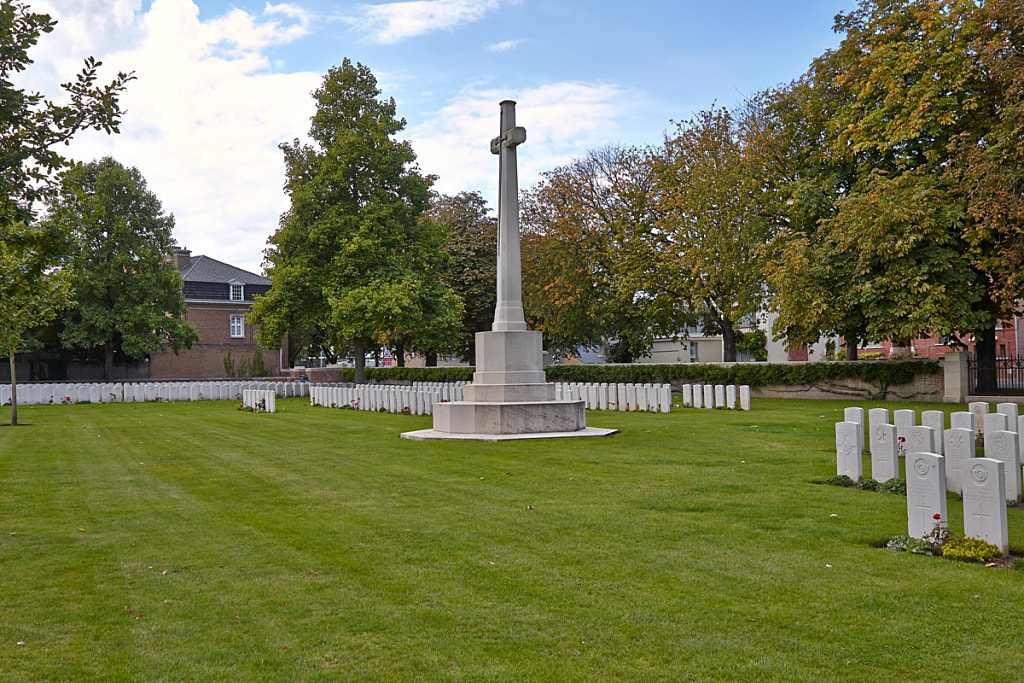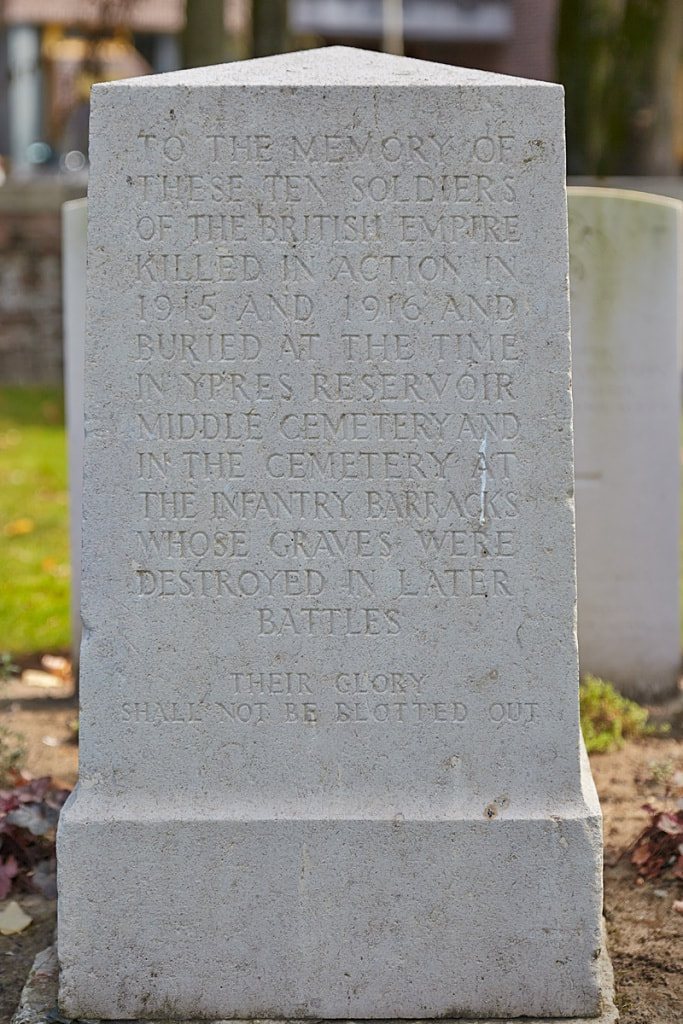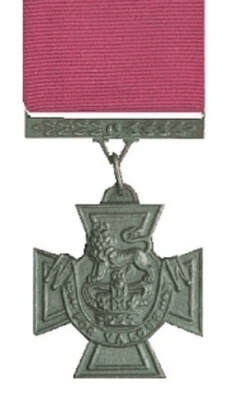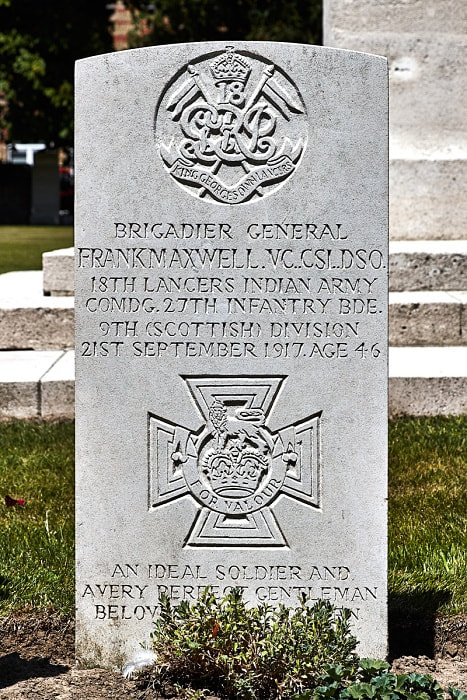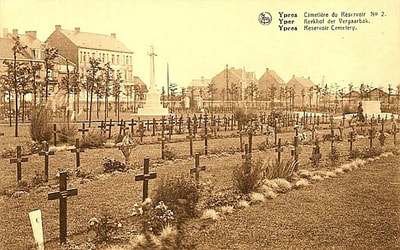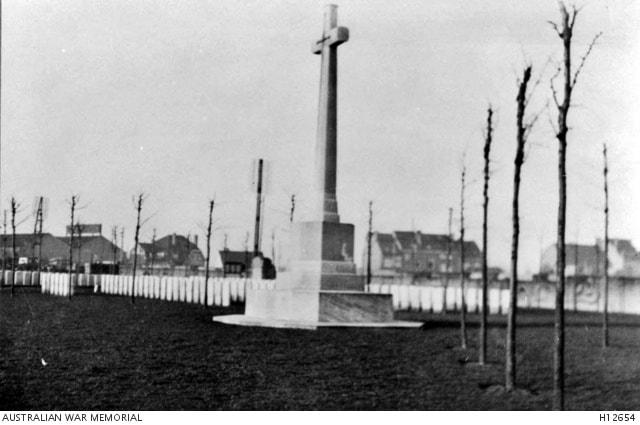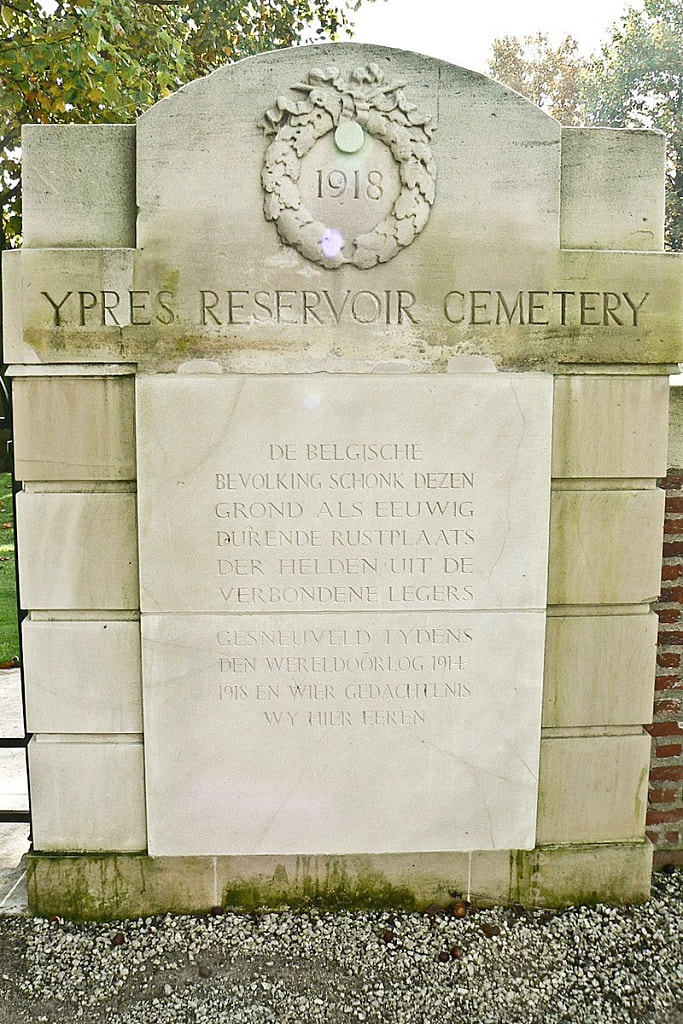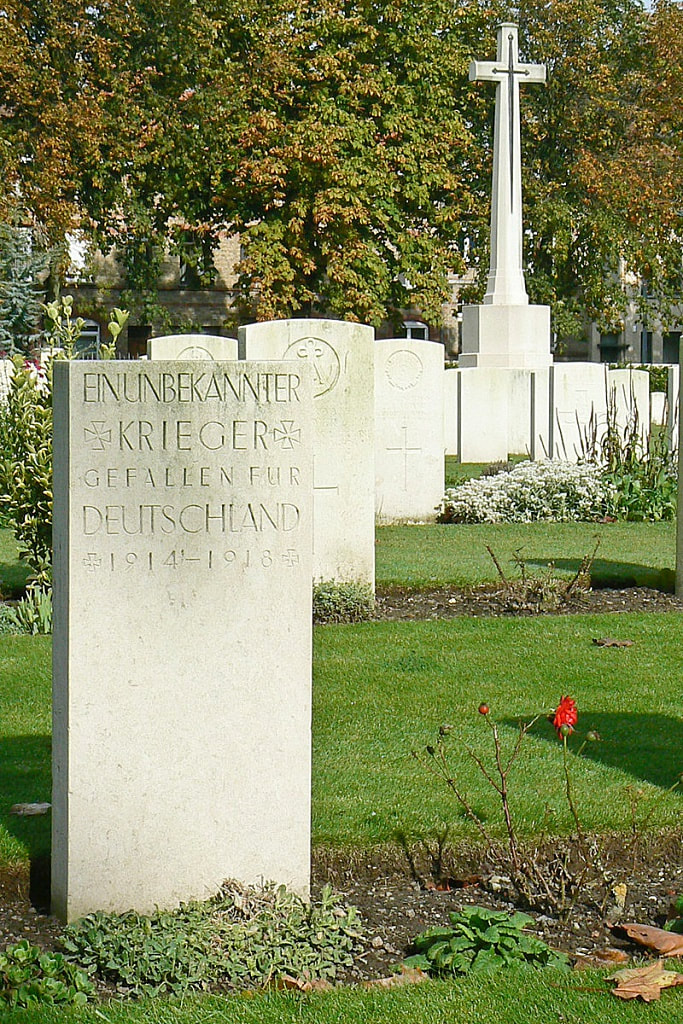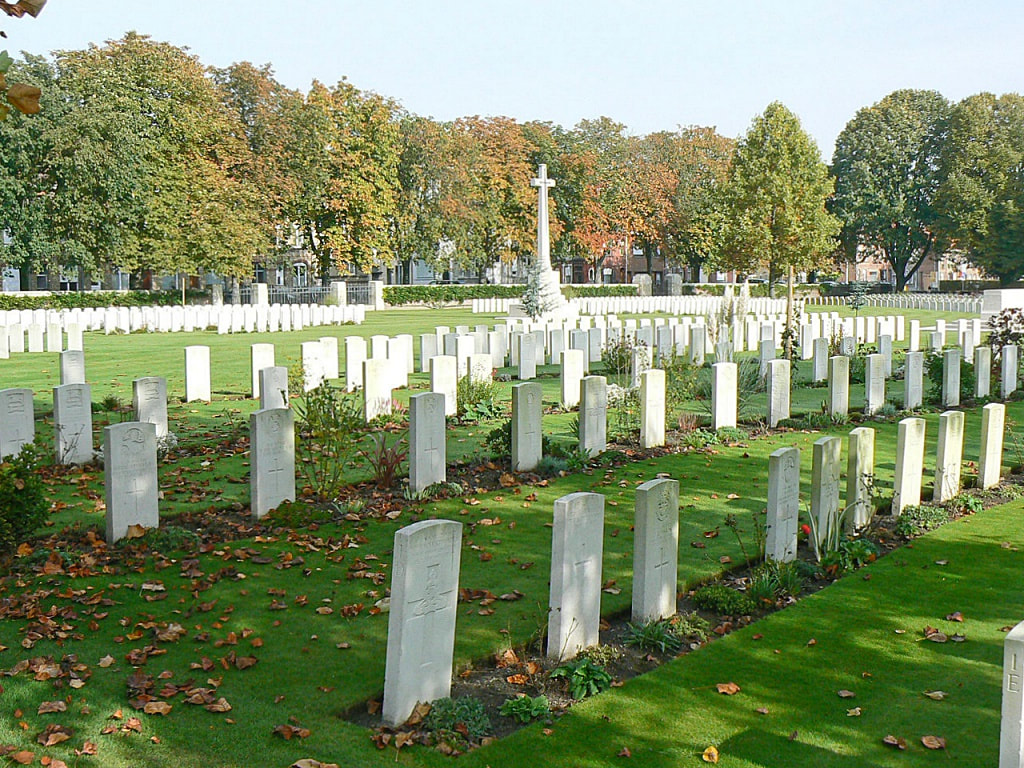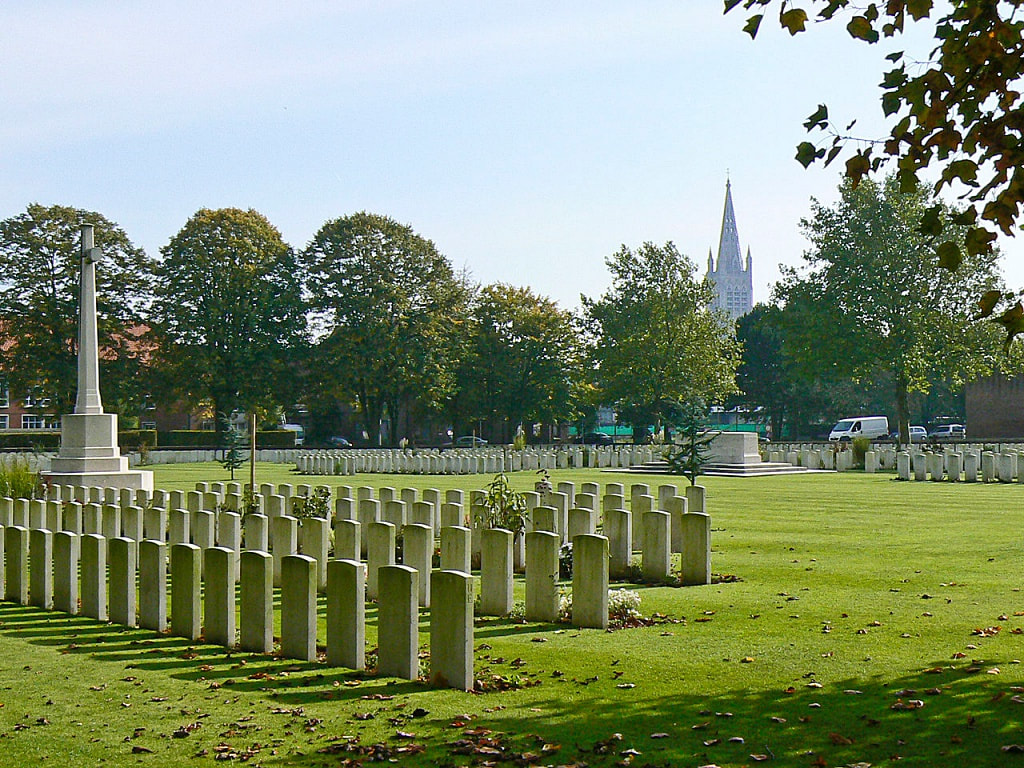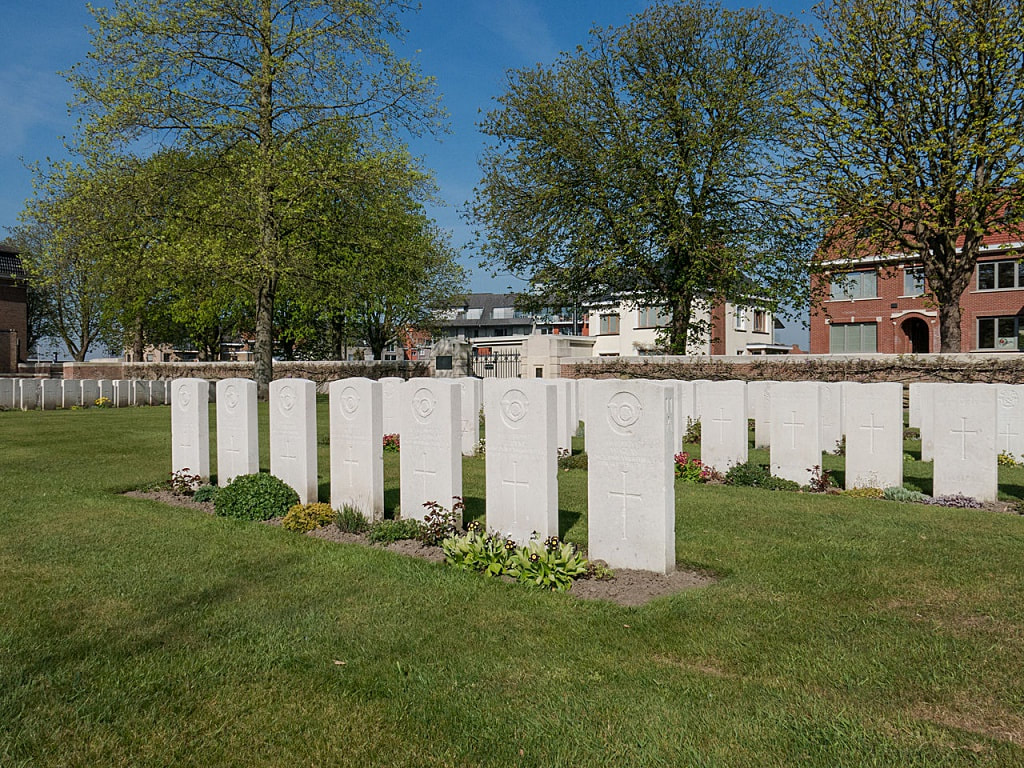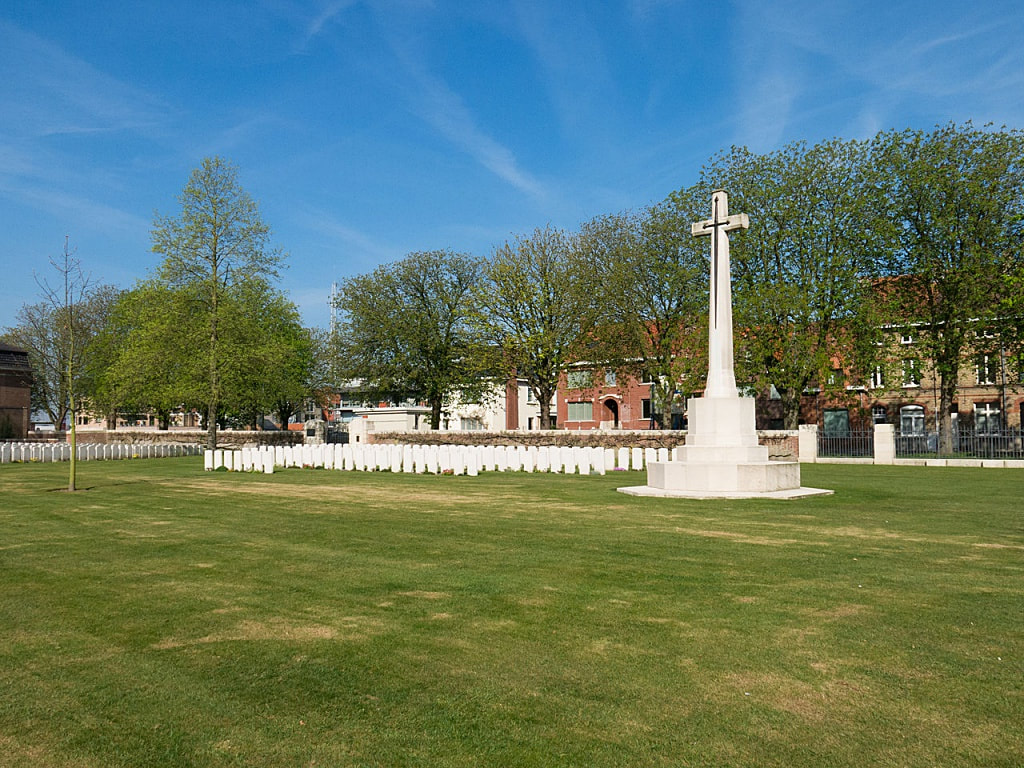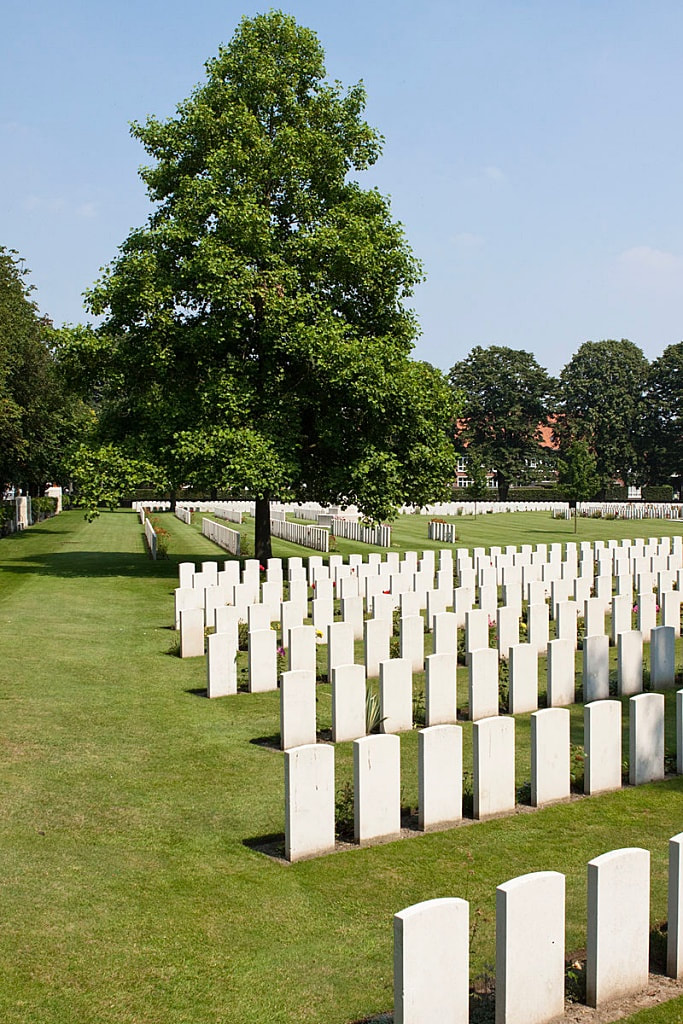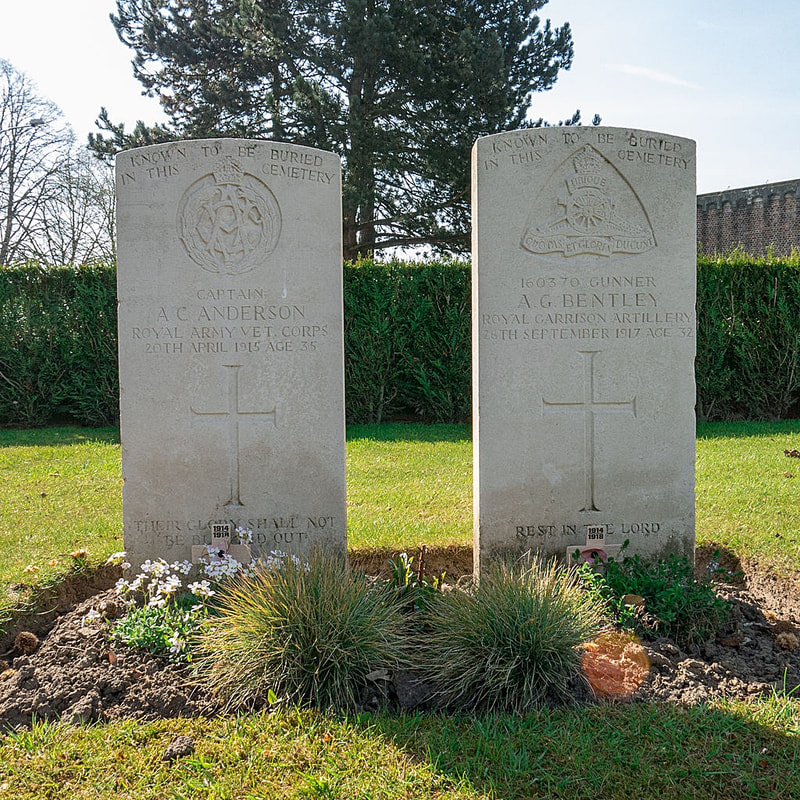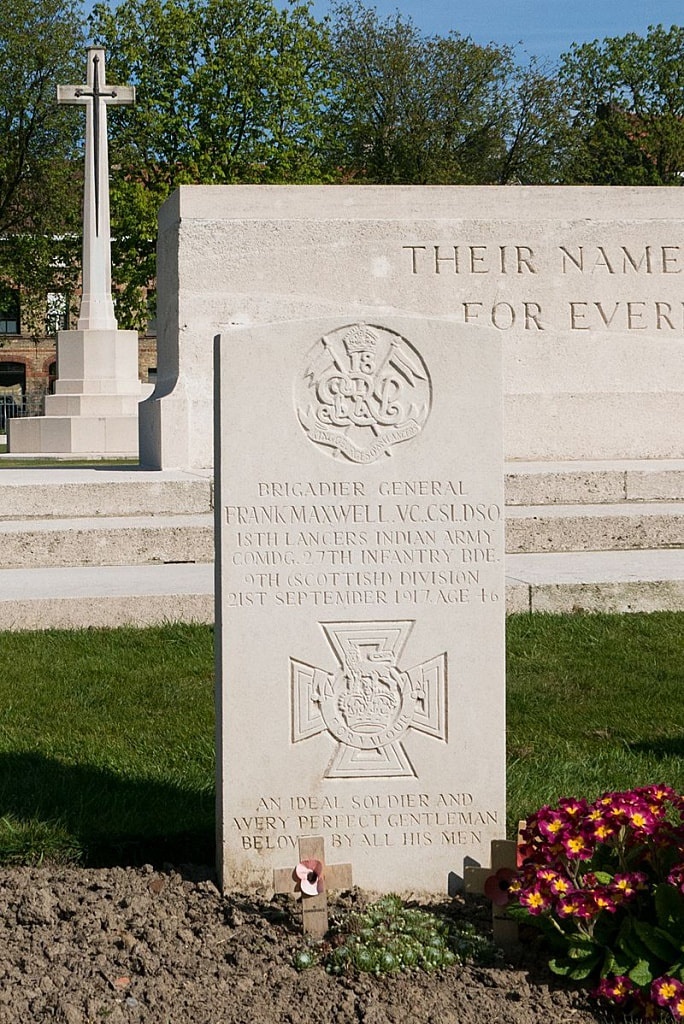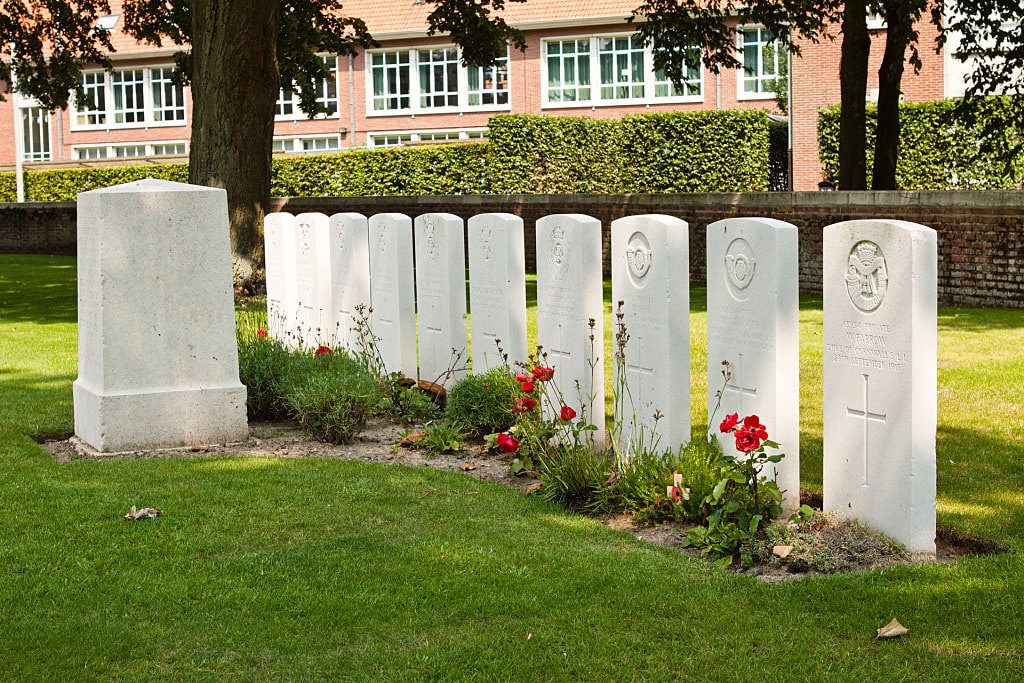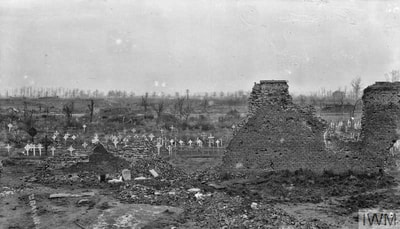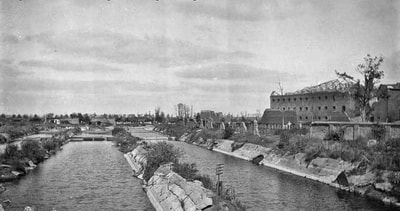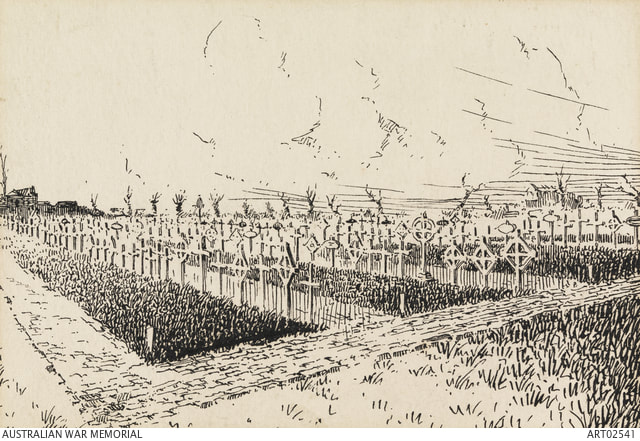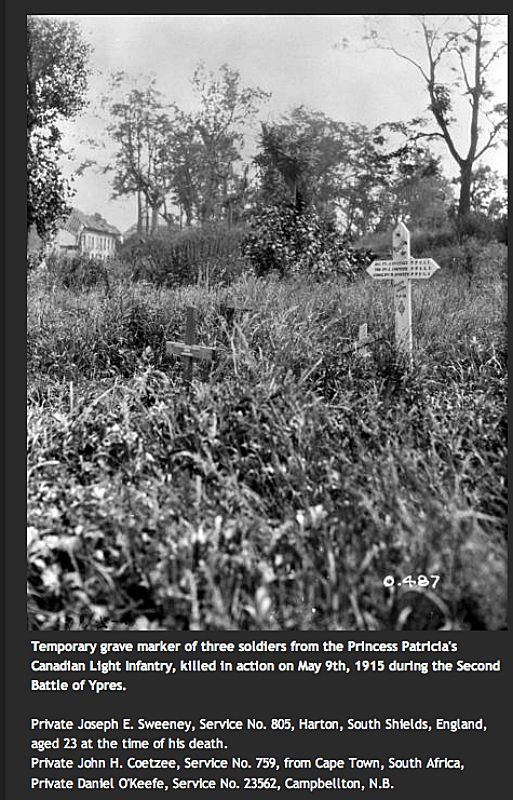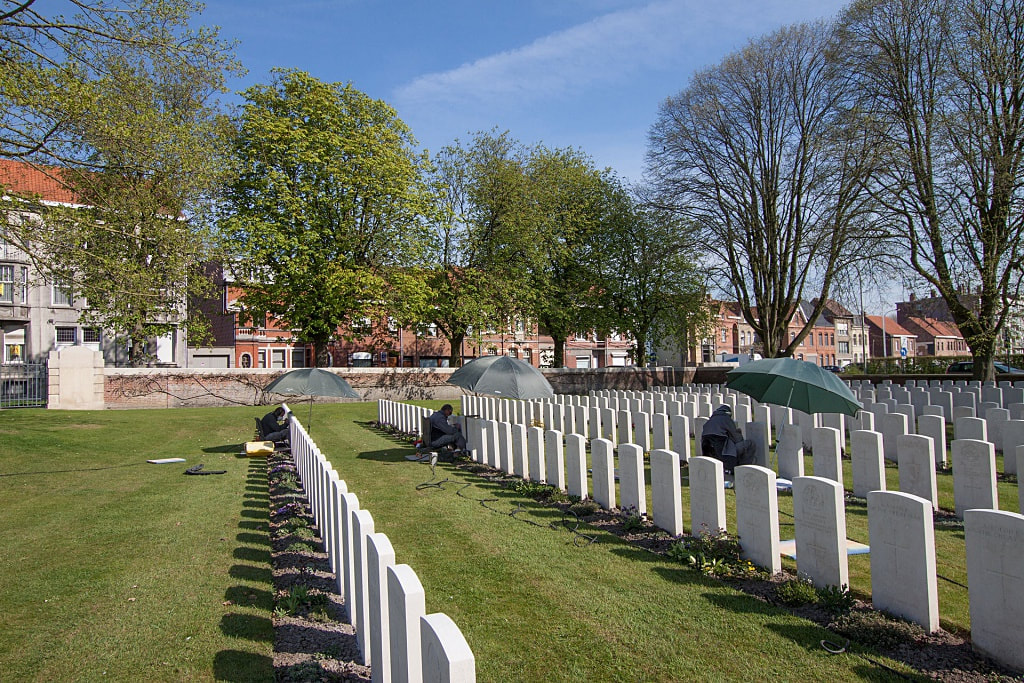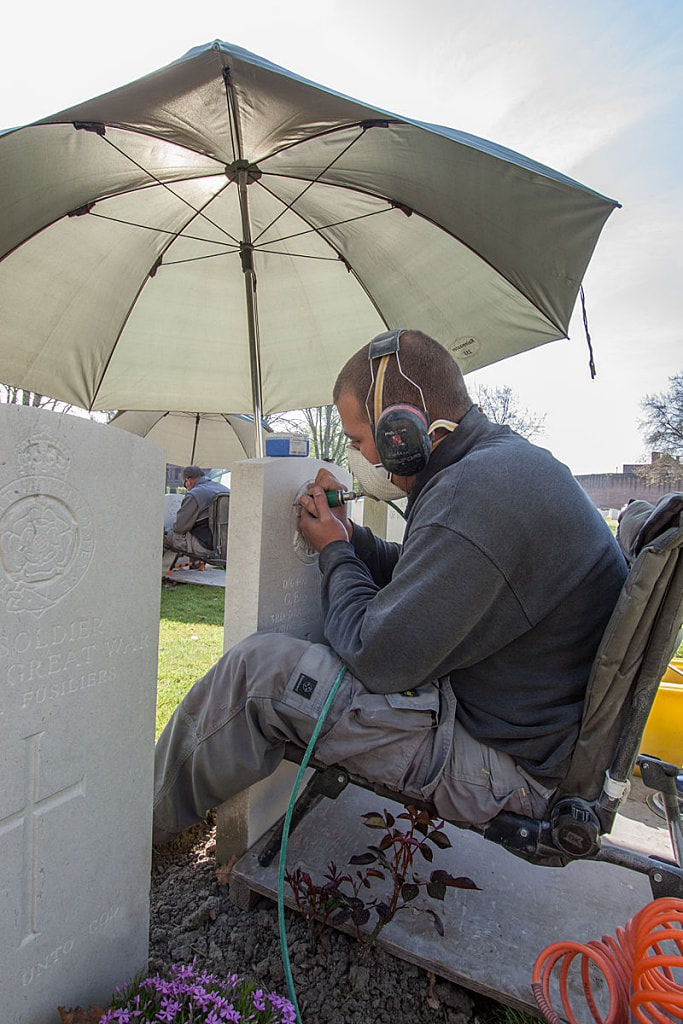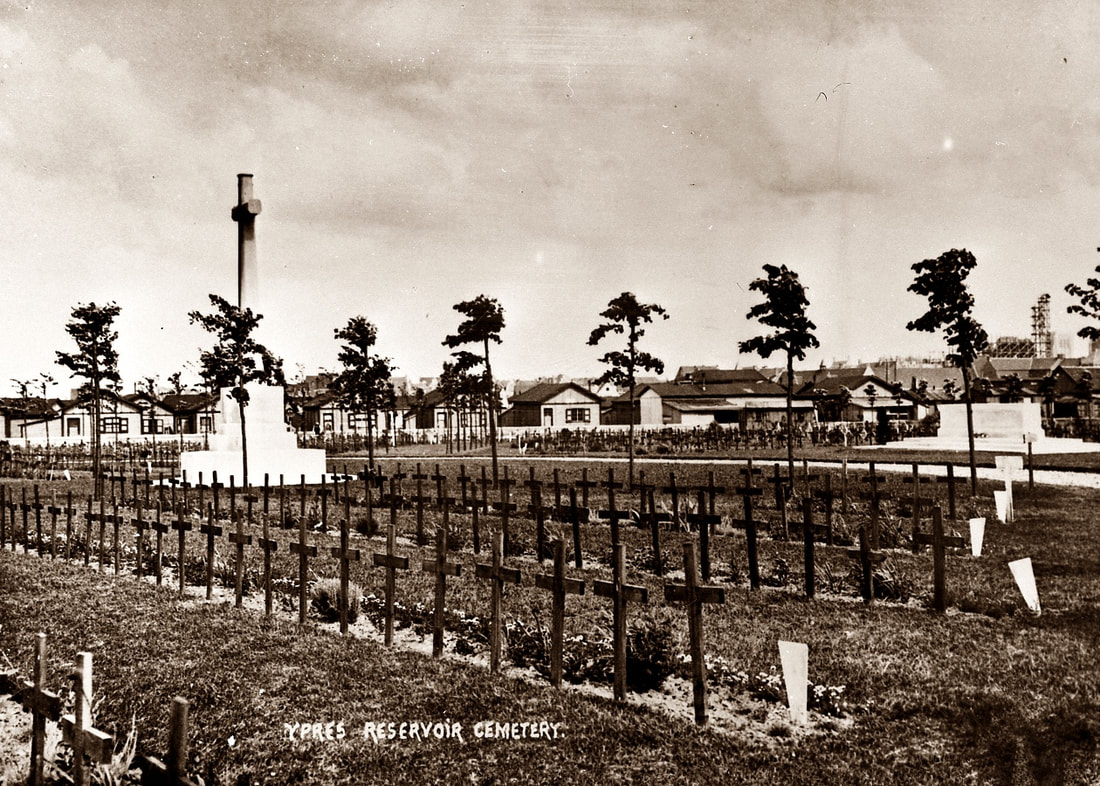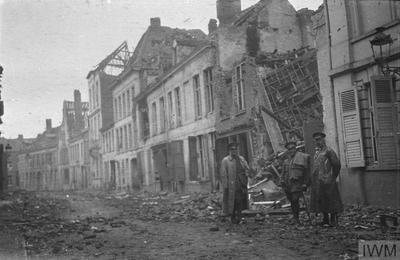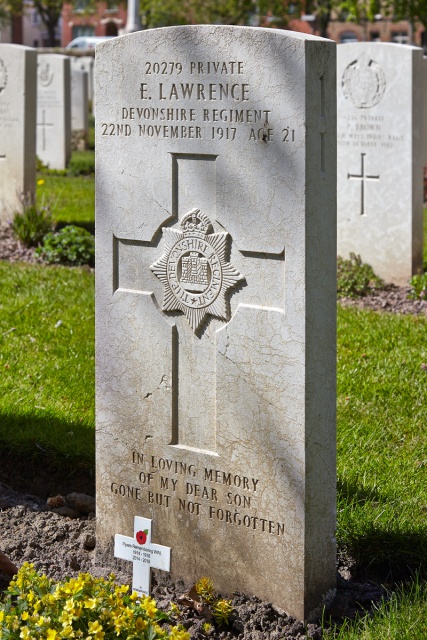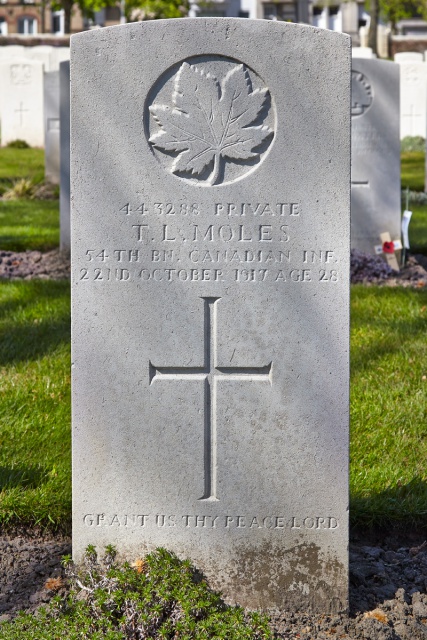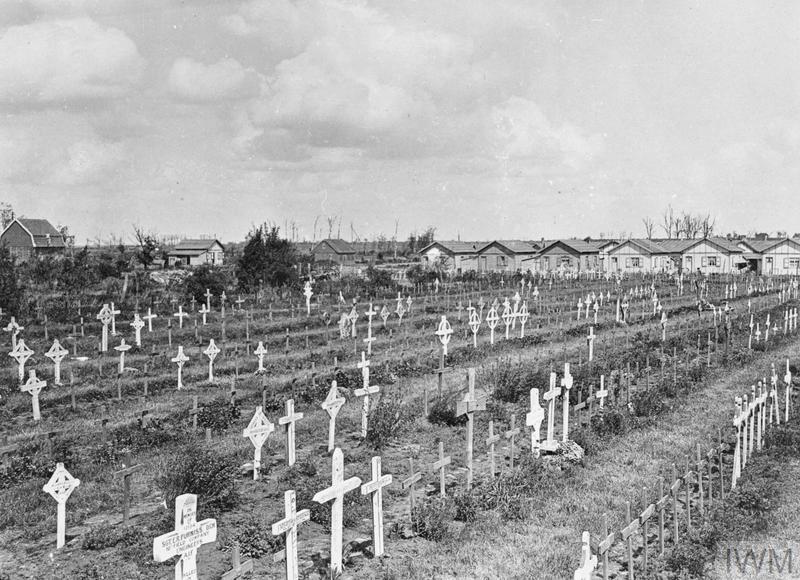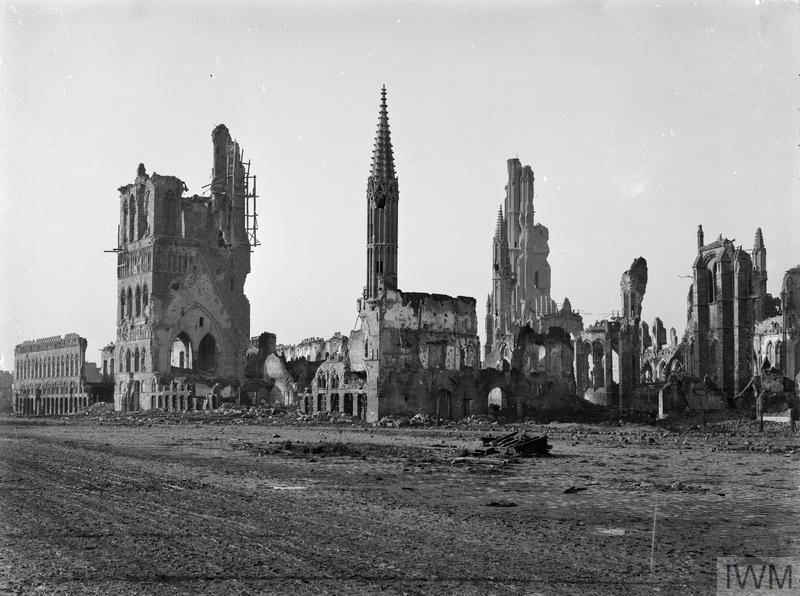YPRES RESERVOIR CEMETERY
West-Vlaanderen
Belgium
GPS Coordinates Latitude: 50.85368 Longitude: 2.87716
Location Information
The cemetery is located to the North-West of Ieper. From the station turn left and drive along Fochlaan to the roundabout, turn right and go to the next roundabout. Here turn left into Haiglaan and continue for 300 metres and then turn right into Plumerlaan. The cemetery is on the right hand side, approximately 200 metres along the road.
Visiting Information
Wheelchair access to this cemetery is possible via main entrance.
Historical Information
From October 1914 to the autumn of 1918, Ypres (now Ieper) was at the centre of a salient held by Commonwealth (and for some months by French) forces. From April 1915, it was bombarded and destroyed more completely than any other town of its size on the Western Front, but even so certain buildings remained distinguishable. The ruins of the cathedral and the cloth hall stood together in the middle of the city, part of the infantry barracks stood in an angle of the south walls and the prison, reservoir and water tower were together at the western gate.
Three cemeteries were made near the western gate: two between the prison and the reservoir, both now removed into the third, and the third on the north side of the prison. The third was called at first the "Cemetery North of the Prison," later "Ypres Reservoir North Cemetery, and now Ypres Reservoir Cemetery.
This cemetery was begun in October 1915 and used by fighting units and field ambulances until after the Armistice, when it contained 1,099 graves. The cemetery was later enlarged when graves were brought in from the battlefields of the salient and the following smaller burial grounds:-
YPRES RESERVOIR SOUTH CEMETERY, between the prison and the reservoir (also called "Broadley's Cemetery" and "Prison Cemetery No.1"). It was used from October 1914 to October 1915, and contained the graves of 18 soldiers from the United Kingdom.
YPRES RESERVOIR MIDDLE CEMETERY, immediately North of the last named (also called "Prison Cemetery No.2" and "Middle Prison Cemetery"). It was used in August and September 1915, and rarely afterwards. It contained the graves of 107 soldiers from the United Kingdom (41 of whom belonged to the 6th King's Own Yorkshire Light Infantry) and one Belgian soldier.
The CEMETERY at the INFANTRY BARRACKS (also called "the Esplanade"). It was used from April 1915 to July 1916 and contained the graves of 14 soldiers from the United Kingdom, ten of whom belonged to the 6th Siege Battery, R.G.A.
In Plot V, Row AA, are the graves of 16 officers and men of the 6th Duke of Cornwall's Light Infantry, who were billeted in the vaults of the cathedral and killed on 12 August 1915 by shelling from the "Ypres Express" firing from Houthulst Forest. The survivors were rescued by the 11th King's Liverpools, but these bodies were not recovered until after the Armistice.
There are now 2,614 Commonwealth servicemen of the First World War buried or commemorated in the cemetery. 1,033 of the burials are unidentified.
Total Burials: 2,614.
Identified Casualties: United Kingdom 1,328, Australia 121, Canada 106, New Zealand 18, South Africa 7, India 1. Total 1,581.
Unidentified Casualties: 1,033.
The cemetery was designed by Sir Reginald Blomfield.
Images in this gallery © Geerhard Joos
Brigadier General Francis Aylmer Maxwell V. C., C. S. I., D. S. O. (Mentioned in Despatches)
General Staff Cdg. 27th Inf. Bde, 9th (Scottish) Div. late 18th King George's Own Lancers.
Killed in action 21st September 1917, aged 46. Plot I. A. 37.
Son of Thomas Maxwell, M.D., and Violet Sophia Maxwell; husband of Charlotte Alice Hamilton Maxwell.
His headstone bears the inscription "An Ideal Soldier And A Very Perfect Gentleman Beloved By All His Men"
Citation:
An extract taken from the "London Gazette," dated 8th March, 1901, records the following:- "Lieutenant Maxwell was one of three Officers not belonging to "Q" Battery, Royal Horse Artillery, specially mentioned by Lord Roberts as having shown the greatest gallantry, and disregard of danger, in carrying out the self-imposed duty of saving the guns of that Battery during the affair at Korn Spruit on 31st March 1900. This Officer went out on five different occasions and assisted to bring in two guns and three limbers, one of which he, Captain Humphreys, and some Gunners, dragged in by hand. He also went out with Captain Humphreys and Lieutenant Stirling to try to get the last gun in, and remained there till the attempt was abandoned. During a previous Campaign (the Chitral Expedition of 1895) Lieutenant Maxwell displayed gallantry in the removal of the body of Lieutenant-Colonel F D Battye, Corps of Guides, under fire, for which, though recommended, he received no reward."
Headstone

The Plaine d'Amour (Minneplein) - This was an area of common ground situated between the inner and outer fortified walls of the town. It was widely used as a place of recreation by the townspeople as well as for animals to graze. The Plaine d'Amour was situated at the north-eastern part of the town, an area now occupied by a school and a disused football ground. The area was very close to where Ypres Reservoir Cemetery now stands and at one time the cemetery was sometimes referred to as 'Plaine d'Amour' or 'Love's Place' Cemetery.
The third grave from the left with the helmet on the cross is 112189 Trooper William Orin Butler, Canadian Light Horse, died 10th November 1917. Plot I. I. 115.
In the second row in the middle of the picture is 114814 Private Firmin Delplancke, Canadian Light Horse, died 11th November 1917. Plot I. I. 126.
Fourth from the left is 112036 Charles E. Dickens, Canadian Light Horse, died 10th November 1917. Plot I. I. 116.
Second from the left is 551367 Private Arthur Oswald Imison, Canadian Light Horse, died 10th November 1917, aged 40. Son of the late John Birchwood Imison and Mary Imison, of Widnes, Lancs., England. Plot I. I. 114.
Fifth from the left is Lieutenant Ernest Wadge, Canadian Light Horse, died 10th November 1917. Plot I. I. 117
In the second row in the middle of the picture is 114814 Private Firmin Delplancke, Canadian Light Horse, died 11th November 1917. Plot I. I. 126.
Fourth from the left is 112036 Charles E. Dickens, Canadian Light Horse, died 10th November 1917. Plot I. I. 116.
Second from the left is 551367 Private Arthur Oswald Imison, Canadian Light Horse, died 10th November 1917, aged 40. Son of the late John Birchwood Imison and Mary Imison, of Widnes, Lancs., England. Plot I. I. 114.
Fifth from the left is Lieutenant Ernest Wadge, Canadian Light Horse, died 10th November 1917. Plot I. I. 117
Images in this gallery © Werner Van Caneghem
Images in this gallery © Werner Van Caneghem
Shot at Dawn
20279 Private Ernest Lawrence, 2nd Bn. Devonshire Regiment, executed for desertion 22nd November 1917, aged 21. Plot I. I. 45. Son of John Lawrence, of 101, Clifton Rd., South Norwood, London.
In Dec 1916 he served 40 days’ Field Punishment No 1 for absence, & on 2 March 1917 fell out from a front-line working party without permission — which resulted in another 28 days. 3 days later, on 5 March, Lawrence absconded again from another such working party, & took train to Rouen. There he reported to the orderly room with a fabricated story. Disbelieved upon inquiry, Lawrence was sent back in due course to his unit. After 3 weeks’ service, on 8 May 1917 at Gonnelieu, he absconded once more from a front-line working party of prisoners under escort. Lawrence turned up at the orderly room at Le Havre, where he sought to draw his pay on the strength of a forged pay-book that had been stolen. Following his arrest, he escaped again on 23 May from the escort sent from his battalion. By 28 May he had gained employment in the drawing-office at the RFC Machine Shop at Pont de Larche, under a false name & with a forged letter of authority in the name of his CO. There he acquired an RFC uniform, all going well until Aug 9 when he was arrested as an absentee.
At trial on 4 Nov 1917 on 3 charges of desertion, Lawrence said on oath that (in March 1917) he intended to finish his design for a new trench mortar which had already received favourable consideration at the War Office; & that his absence was due to the refusal of his CO to assist. In due course, he admitted forging the pay-book used at Le Havre: ‘It was a bold game to play, but I could not get any satisfaction as regards my plans…’; & acknowledged forging the document later handed in to the RFC.
Following conviction on each charge, his CO described him as ‘a constant source of annoyance’ & absolutely untrustworthy. Lawrence’s Brigade commander referred to him as a dangerous influence,& recommended exemplary punishment — a view further endorsed, leading to confirmation. (Corns, pp 221-223)
11/81 Private Charles McColl, 1st/4th Bn. East Yorkshire Regiment, executed for desertion 28th December 1917, aged 26. Plot IV. A. 6. Son of Mrs. Annie McColl, of 6, Bramham Avenue, Woodhouse Street, Hull.
He was wounded at Neuve Chapelle & invalided home. Upon his return to France, McColl went absent & 10 years’ imprisonment was imposed. He later absconded from his platoon when in brigade support in the Ypres Salient, leaving behind his rifle & equipment. 4 days later, he was arrested in Calais after enquiring about a rest camp & stating that he was on his way to England. At trial, the soldier detailed his nervous condition & his inability to control himself when in the trenches, stating that he had been previously sent home with heart failure & shattered nerves. No medical examination was ordered. Unsurprisingly, he behaved wildly when the finding & sentence were promulgated to him in his cell — & he had to be manacled on his way to the firing squad. (Putkowski, p. 225)
443288 Private Thomas Lionel Moles, 54th Bn. Canadian Expeditionary Force, executed for desertion 22nd October 1917, aged 28. Plot I. H. 76. Son of Louisa Mudford (formerly Moles), of West Chinnock, Crewkerne, Somerset, England, and the late John Moles.
Native of Brompton Ralph. He had served in the Somerset Light Infantry before emigrating to Canada; & thus joined the Canadian Expeditionary Force, in which he served for nearly 2 years before he deserted. (Putkowski, p. 207)
20279 Private Ernest Lawrence, 2nd Bn. Devonshire Regiment, executed for desertion 22nd November 1917, aged 21. Plot I. I. 45. Son of John Lawrence, of 101, Clifton Rd., South Norwood, London.
In Dec 1916 he served 40 days’ Field Punishment No 1 for absence, & on 2 March 1917 fell out from a front-line working party without permission — which resulted in another 28 days. 3 days later, on 5 March, Lawrence absconded again from another such working party, & took train to Rouen. There he reported to the orderly room with a fabricated story. Disbelieved upon inquiry, Lawrence was sent back in due course to his unit. After 3 weeks’ service, on 8 May 1917 at Gonnelieu, he absconded once more from a front-line working party of prisoners under escort. Lawrence turned up at the orderly room at Le Havre, where he sought to draw his pay on the strength of a forged pay-book that had been stolen. Following his arrest, he escaped again on 23 May from the escort sent from his battalion. By 28 May he had gained employment in the drawing-office at the RFC Machine Shop at Pont de Larche, under a false name & with a forged letter of authority in the name of his CO. There he acquired an RFC uniform, all going well until Aug 9 when he was arrested as an absentee.
At trial on 4 Nov 1917 on 3 charges of desertion, Lawrence said on oath that (in March 1917) he intended to finish his design for a new trench mortar which had already received favourable consideration at the War Office; & that his absence was due to the refusal of his CO to assist. In due course, he admitted forging the pay-book used at Le Havre: ‘It was a bold game to play, but I could not get any satisfaction as regards my plans…’; & acknowledged forging the document later handed in to the RFC.
Following conviction on each charge, his CO described him as ‘a constant source of annoyance’ & absolutely untrustworthy. Lawrence’s Brigade commander referred to him as a dangerous influence,& recommended exemplary punishment — a view further endorsed, leading to confirmation. (Corns, pp 221-223)
11/81 Private Charles McColl, 1st/4th Bn. East Yorkshire Regiment, executed for desertion 28th December 1917, aged 26. Plot IV. A. 6. Son of Mrs. Annie McColl, of 6, Bramham Avenue, Woodhouse Street, Hull.
He was wounded at Neuve Chapelle & invalided home. Upon his return to France, McColl went absent & 10 years’ imprisonment was imposed. He later absconded from his platoon when in brigade support in the Ypres Salient, leaving behind his rifle & equipment. 4 days later, he was arrested in Calais after enquiring about a rest camp & stating that he was on his way to England. At trial, the soldier detailed his nervous condition & his inability to control himself when in the trenches, stating that he had been previously sent home with heart failure & shattered nerves. No medical examination was ordered. Unsurprisingly, he behaved wildly when the finding & sentence were promulgated to him in his cell — & he had to be manacled on his way to the firing squad. (Putkowski, p. 225)
443288 Private Thomas Lionel Moles, 54th Bn. Canadian Expeditionary Force, executed for desertion 22nd October 1917, aged 28. Plot I. H. 76. Son of Louisa Mudford (formerly Moles), of West Chinnock, Crewkerne, Somerset, England, and the late John Moles.
Native of Brompton Ralph. He had served in the Somerset Light Infantry before emigrating to Canada; & thus joined the Canadian Expeditionary Force, in which he served for nearly 2 years before he deserted. (Putkowski, p. 207)

